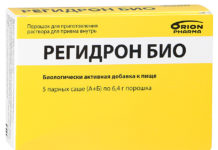Often behind the external modesty of the plant lies a powerful healing power. This fact clearly confirms the meadow cornflower, which many consider a harmful weed, because it looks rather inconspicuous. Let's try to reveal the secrets of this amazing, but very useful plant.
Material Content:
Cornflower meadow: description, types and varieties
Many centuries ago, the famous naturalist K. Linnaeus, who was able to create a unique classification of plants, drew attention to this variety of wild herbs. Cornflower meadow likes to settle on forest edges, in thickets of wild shrubs, along roads, in the vast fields and meadows. In principle, this feature of the plant is reflected in its very name.

The meadow cornflower belongs to the family of Asteraceae plants. This is a perennial grass, which under favorable conditions can reach a height of more than a meter. The plant tolerates unfavorable conditions, therefore, its habitat is constantly increasing.
The plant blooms almost throughout the summer period, and its lilac-pink, sometimes white, inflorescences always attract bees. Therefore, the meadow cornflower is recognized as one of the best honey plants.
When describing a plant, one cannot ignore its medicinal properties. A modest flower in ancient times was noticed by herbalists, after which its healing properties began to be widely used in folk medicine. He enjoys authority among professional doctors.
As part of medicinal solutions and other dosage forms, cornflower is actively used to localize inflammatory processes.In addition, it well stimulates the outflow of bile and is an effective diuretic.
The healing properties of the plant
Although the composition of the meadow cornflower has not yet been fully studied, scientists have discovered in it a whole range of components useful for human health.
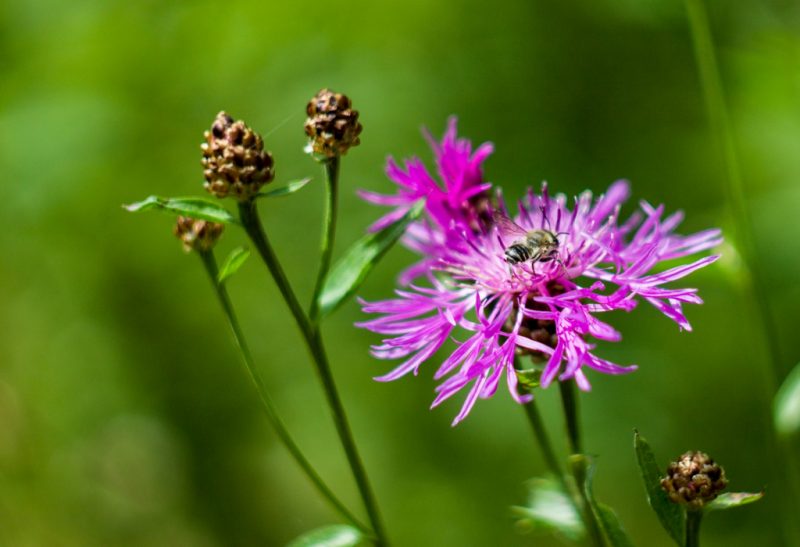
The most valuable elements:
- ascorbic acid (vitamin C) and other important vitamins;
- tannin components (present in the rhizome of the perennial);
- substance centaurin, which is a bitter glycoside with antipyretic and diuretic effect;
- pectins;
- resins;
- volatile (block the development of infectious processes).
It is clear that such a set of natural ingredients is a solid foundation of useful properties that cornflower has in abundance. To verify this, it is enough to name a few basic qualities of the plant, which are used for home treatment.
This list contains the following properties:
- choleretic;
- painkillers;
- diuretic;
- antioxidant;
- antipyretic;
- anti-inflammatory.
The plant also has many other healing abilities, which allows it to be used in the complex therapy of a wide variety of pathologies.
Diseases treated by meadow cornflower
Since the chemical composition of this wild perennial is a very useful combination of substances, the plant is often used for medicinal purposes. In the piggy bank of traditional medicine there are many effective recipes, including meadow cornflower. Do not deny the outstanding capabilities of the flower and professional doctors.
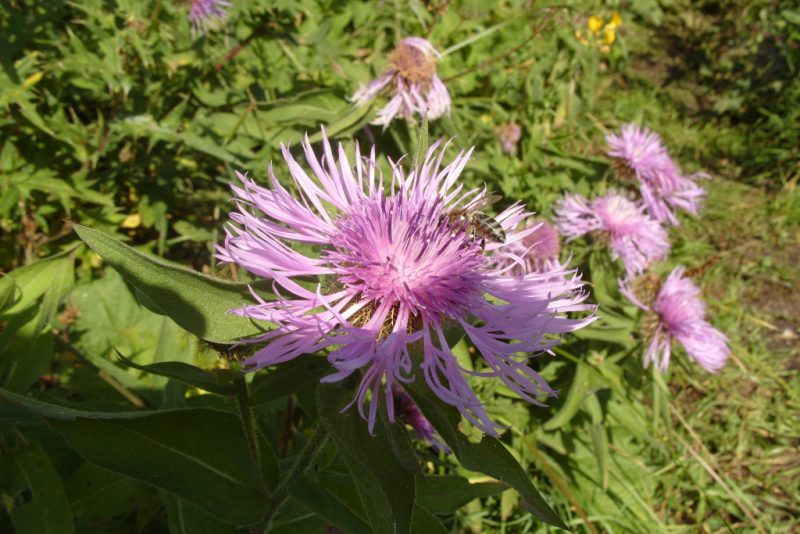
On the basis of this herb at home, you can cook various decoctions, infusions, medicinal teas. The components of meadow cornflower are part of many drugs that are officially produced by the pharmaceutical industry.
The main medicinal properties of meadow cornflower are widely used in the treatment of such conditions:
- pathology of the cardiovascular system;
- kidney disease
- malfunctioning of the liver (cornflower is especially effective for hepatitis);
- intestinal disorders (diarrhea);
- dermatitis and other skin problems;
- menstrual irregularities;
- manifestations of diathesis in infants.
Helps the cornflower cope with the signs of rheumatism and arthritis, eliminates post-traumatic pain during sprains.
Contraindications
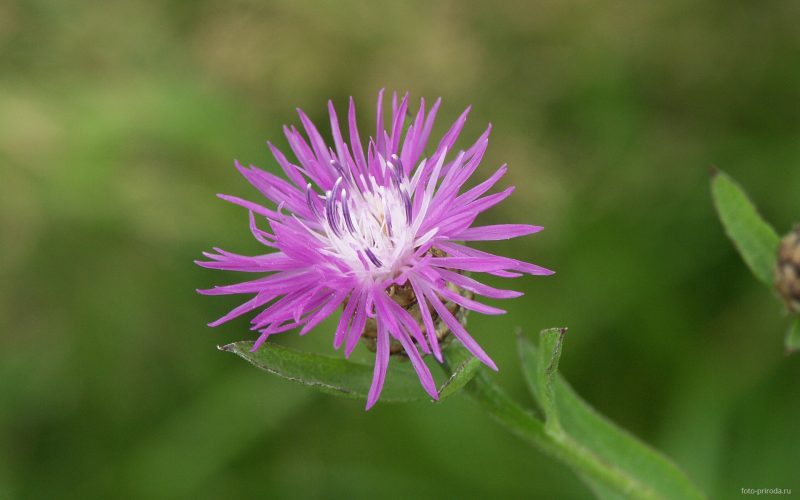
Due to the low knowledge of this herb, a complete list of contraindications for its use has not yet been determined. But it is known that some active components of a plant are able to have a toxic effect on the body. Therefore, its use for home therapy should be carried out extremely carefully and be sure to consult a doctor. And for individuals who have been identified intolerance to one of the components of the composition, it is better to abandon treatment with this plant.
Useful properties during pregnancy and lactation
The specific composition of the meadow cornflower and the presence of toxic components in it completely exclude the possibility of its use during the period of gestation and lactation.

Therefore, women belonging to this risk group, as well as young children, the internal use of cornflower-based products is prohibited. But external compounds (for example, herbal decoctions for therapeutic baths) may well be used. Also allowed compresses, lotions and other manipulations of external influences.
Traditional Medicine Recipes for Health
There are many different methods of alternative treatment involving funds based on meadow cornflower. Below are the most famous of them.

Recipe 1: Water infusion of the root of the herb helps with diarrhea. Preparing a tool in the following sequence: 2 liters. including the dry component is poured with boiling water (1 cup), the mixture is infused for 2 hours, and then filtered. Take the product should be on a tablespoon before eating.
Recipe 2: For minor injuries and sprains, you can steam the grass and apply it to the problem area. Such a simple procedure will relieve swelling and pain.
Recipe 3: With a cold, a remedy prepared from 2 tsp will be effective. dry herbs, which must first be poured with boiling water (200 ml), and then insist for about 2 hours. After filtering, the healing agent can be drunk to enhance immunity. It is recommended to do this before meals.
Collection, harvesting and storage
Today in the pharmacy network a wide range of herbal preparations is presented, so the basis for the preparation of funds according to folk recipes is easy to purchase. But many people prefer to harvest herbs on their own.
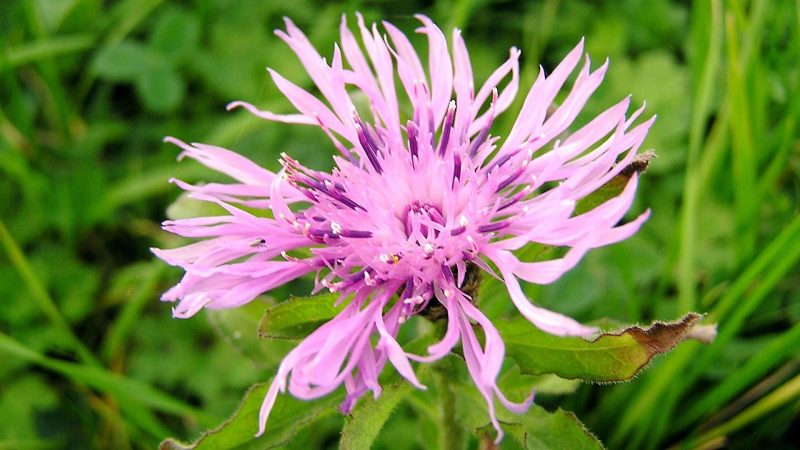
- For medicinal purposes, flower baskets of cornflower are collected, as well as its roots.
- Inflorescences are harvested throughout the flowering period, and the roots should be dug up only in late autumn.
- All collected raw materials must be dried under a canopy. In order for the collected material to dry evenly, it is necessary to periodically turn it over and protect it from direct sunlight.
Some herbalists use special drying units to dry herbs. This speeds up the process and improves the quality of the raw materials.
Important! When self-harvesting, it must be remembered that the collection of medicinal herbs is carried out only in ecologically clean areas. Therefore, it is better not to collect grass near roads and other disadvantaged places.
Healing herbs, including a meadow cornflower, can greatly benefit the body. This humble representative of the plant world has enormous potential, but its benefits are real only when this natural resource is used correctly.







